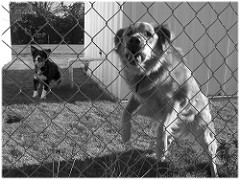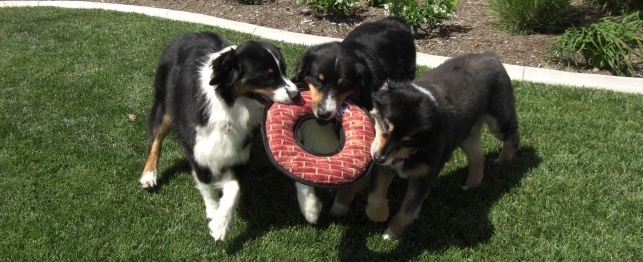An untrained dog is an embarrassment to the owner and is not healthy and well adjusted. It is up to the owner to train the dog to display acceptable behavior in all situations. Dog training specifically dog obedience training is crucial to ensure a happy, healthy and well balanced dog.
Puppy training is simply the process of teaching your dog to perform certain actions in response to a command that you give your dog. The earlier you start training your dog, the better.
A. Disobedience
A dog is disobedient when he deliberately does not respond to a command that you give him. This is to be distinguished from incomprehension which results when your dog does not know how to respond to a command or request that you give him. In this case, you simply need to spend a little more time training him.
Disobedience is when your dog knows the action required but simply ignores it. You know that he is being disobedient because he has performed the required action in the past in response to the command.
It may appear to be a minor issue that you may not want to pursue but I shall advise you not to view it as minor. It is detrimental to the positive relationship you are trying to build with your puppy because disobedience implies a lack of respect.
When your dog disobeys your request, he is letting you know loud and clear that your authority over him is non existent. If this continues, you dog shall become passive aggressive to you which is not healthy for both of you. If not fixed, this will worsen leading to an out of control dog.
Dogs are pack animals and each dog in a pack has a rank. Your role is to become leader of the pack and assume alpha status. The dog shall not give you this status. Dog training requires that you show him that you outrank him in the social hierarchy in your household.
Your dog is happiest when he realizes that someone else is the decision maker and tells him what behaviors to display and how to be obedient. You can not have a functional and healthy relationship with your dog if he does not see you as an authority figure that he must obey. To do this you need to reinforce acceptable behavior through dog training techniques.
B. Obedience Training Tips
1. When you exit your car or leave your home, you should be in the lead.
If your dog leaves first, you are letting him know that he has alpha status.
2. Make him wait for his meal.
Vary the times that you feed him which will let him know that you are in charge so that he does not have any expectations about his meal time. When food is placed in front of him, do not let him attack the food immediately. Make him wait until you tell him to eat.
3. Your dog should not initiate play.
You may think it is cute that your dog is nudging you to play so you give in to his demands which again lets him know that he is in charge of you and your behavior. Simply ignore him when he starts nudging you or whining. Busy yourself with some other task. When he gives up after he sees that you will not play with him, initiate playtime.
Playtime is important for you and the dog but you must be in charge of this time in order to teach him obedience to you the "alpha dog".
4. When you get home, do not immediately go to your dog and become affectionate. The alpha never approaches betas and initiates contact. The alpha ignores betas, relaxes for a little while and only interacts when the time is right and he is good and ready. Wait between three to five minutes after you get home before you approach him.
Obedience dog training requires that you maintain a proper obedience training plan which should not take more than ten minutes a day to teach and enforce your commands. This can be reduced when the dog becomes more and more obedient. Consistency and perseverance is key because learning positive and obedient behavior takes time.

 How to Balance Your Pets Play and Relaxation
How to Balance Your Pets Play and Relaxation
How to Balance Your Pets Play and Relaxation
How to Balance Your Pets Play and Relaxation
 Games for Dogs: Bobbing for Biscuits
Games for Dogs: Bobbing for Biscuits
Games for Dogs: Bobbing for Biscuits
Games for Dogs: Bobbing for Biscuits
 Stop Dog Barking: The Real Approach To Train Your New Family Dog.
Part of training your dog to stop dog barking is learning t
Stop Dog Barking: The Real Approach To Train Your New Family Dog.
Part of training your dog to stop dog barking is learning t
 Playing Tug of War with Your Dog
Playing Tug of War with Your Dog
Playing Tug of War with Your Dog
Playing Tug of War with Your Dog
 MORE Games That Delight Dogs
MORE Games That Delight Dogs
MORE Games That Delight Dogs
MORE Games That Delight Dogs